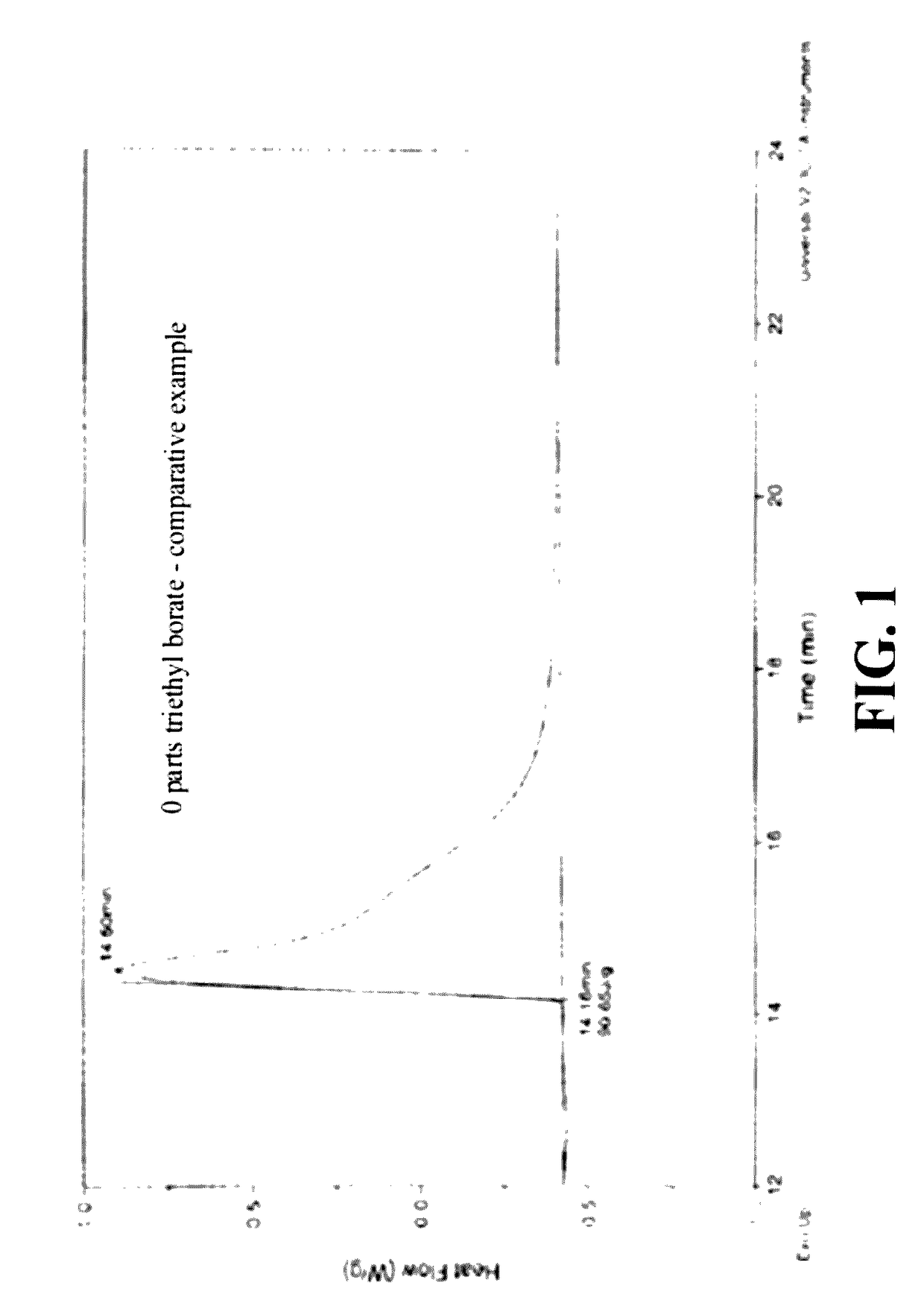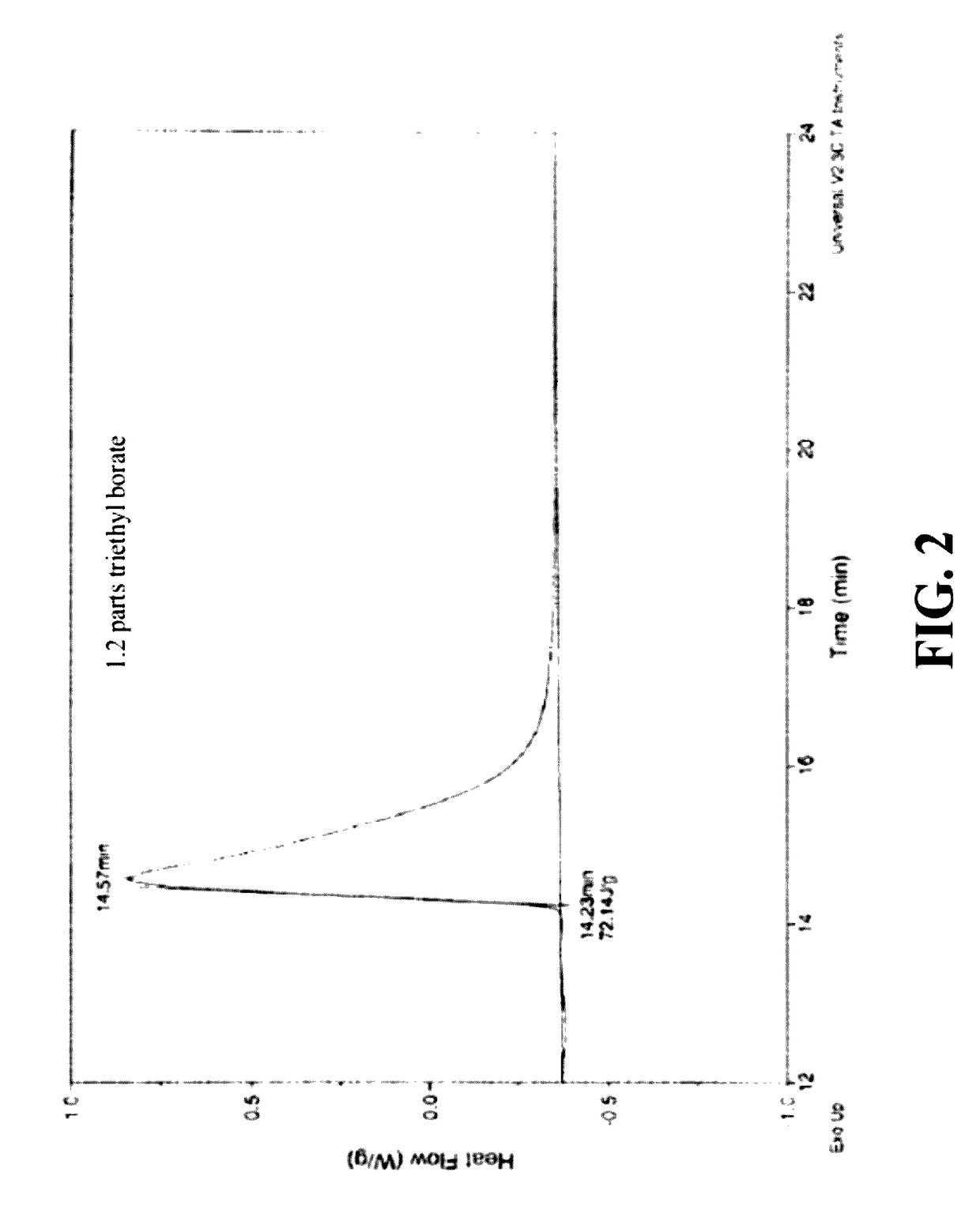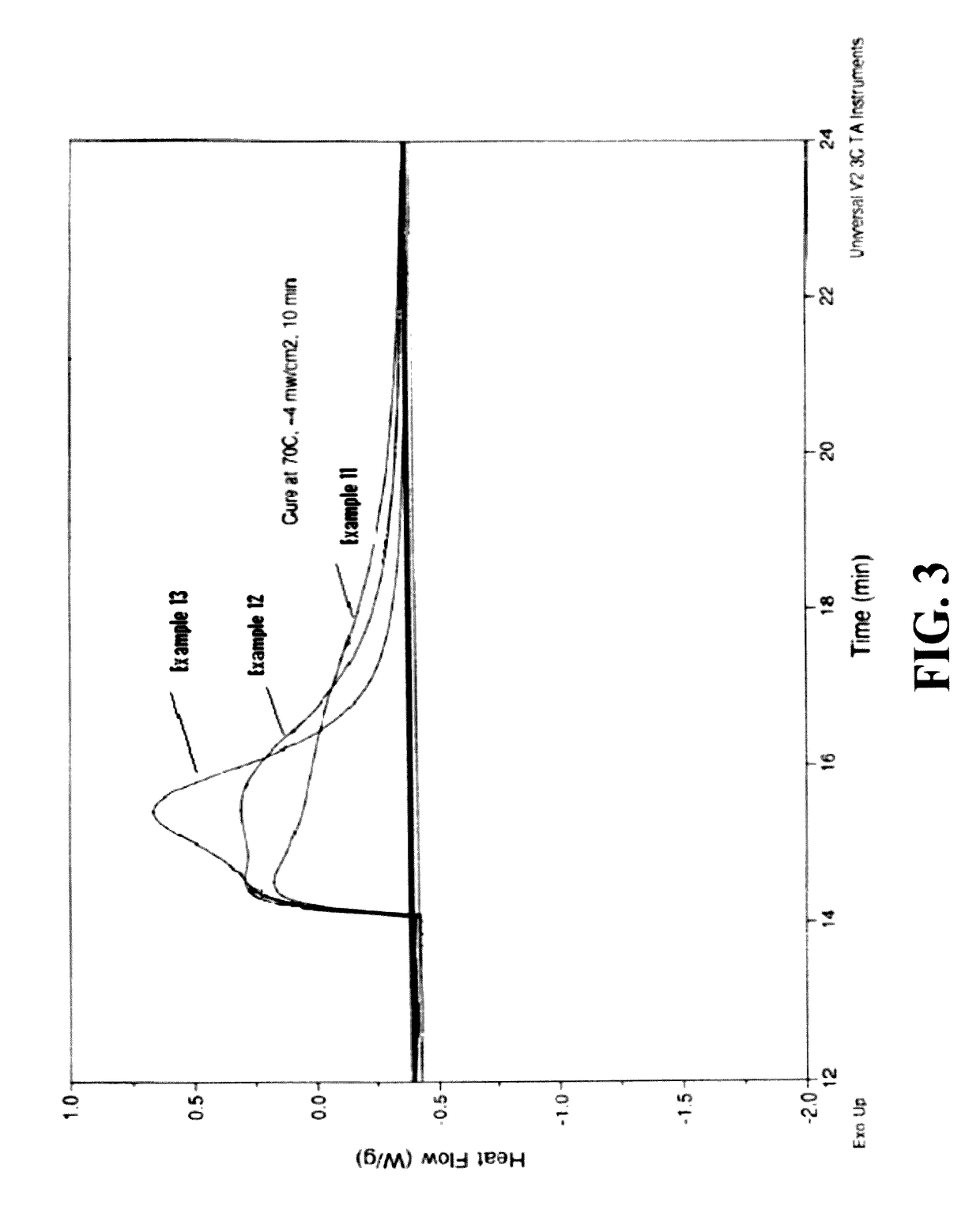Silicone hydrogel reactive mixtures comprising borates
a technology of reactive mixture and silicone hydrogel, which is applied in the direction of instruments, optical elements, optics, etc., can solve the problems of inability to use, inability and unable to achieve the effect of reducing gel time and increasing viscosity of mixtur
- Summary
- Abstract
- Description
- Claims
- Application Information
AI Technical Summary
Benefits of technology
Problems solved by technology
Method used
Image
Examples
example 1
Preparation of HFM 30:30 Macromer
[0096]A sample of 50 g octamethylcyclotetrasiloxane was combined with 9.36 g of 1,3,5,7-tetramethylcyclotetrasiloxane, 1.96 g 1,3-bis(3-methacryloxypropyl)tetramethyldisiloxane, 70 g dichloromethane and 0.5 g trifluoromethanesulfonic acid in a round bottomed flask. This mixture was stirred under nitrogen at room temperature for about 24 hours. The mixture was washed with 75 ml saturated aqueous sodium carbonate. The bottom layer was washed with about 75 ml of water and dried over sodium sulfate. The mixture was filtered through Celite and the solvent was removed under reduced pressure to give an intermediate product as a clear oil.
[0097]To 98 g of this intermediate was added 0.02 g of 2,6-di-tert-butyl-4-methylphenol (BHT), 0.04 g potassium acetate, 100 mg of a 10% (wt) solution of chloroplatinic acid in isopropanol, 18.1 g allyl alcohol and about 100 g isopropanol. This mixture was heated under nitrogen to 50° C. for three hours. The mixture was coo...
example 2
Control—0 M % OH Borate
[0098]A blend was made of 60 parts by weight HFM 130:30 (see Example 1) and 40 parts N,N-dimethylacrylamide (DMA) with 0.23 parts CGI 819 (bis(2,4,6-trimethylbenzoyl)-phenylphosphineoxide). A 5 g portion was stirred and its viscosity was visually observed. The mixture was deemed to have low viscosity and a clear appearance.
example 3
6 M % OH Borate
[0099]A 5 g portion of a blend was prepared in accordance with Example 2. To this mixture was added 25 μL triethyl borate (0.15 mmoles, 0.02145 g). The resulting mixture was deemed to be slightly more viscous than the control of Example 2. The mixture formed a white precipitate upon addition of the borate but the precipitate gradually disappeared with stirring.
Triethyl borate introduces 20.5 mmoles of OH functionality per gram.
[0100](moleB(OEt)3145.99gB(OEt)3)(3moleOH1moleB(OEt)3)(1000mmolesmole)=20.5mmolesOHgB(OEt)3
[0101]Similar calculations for blends using the HFM (130:30) of Example 1 shows the blend provides 2.21 mmole OH per gram. Analogous methods show triethyl borate can provide 20.5 borate functionality (B—O bonds) per gram.
[0102]The mmoles of OH from a component per gram of blend can then be determined. The following calculation determines the mmol OH from triethyl borate, but HFM 130:30 can also be determined in a similar fashion...
PUM
| Property | Measurement | Unit |
|---|---|---|
| temperatures | aaaaa | aaaaa |
| haze | aaaaa | aaaaa |
| haze | aaaaa | aaaaa |
Abstract
Description
Claims
Application Information
 Login to View More
Login to View More - R&D
- Intellectual Property
- Life Sciences
- Materials
- Tech Scout
- Unparalleled Data Quality
- Higher Quality Content
- 60% Fewer Hallucinations
Browse by: Latest US Patents, China's latest patents, Technical Efficacy Thesaurus, Application Domain, Technology Topic, Popular Technical Reports.
© 2025 PatSnap. All rights reserved.Legal|Privacy policy|Modern Slavery Act Transparency Statement|Sitemap|About US| Contact US: help@patsnap.com



